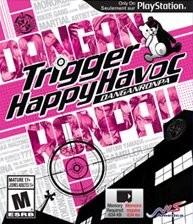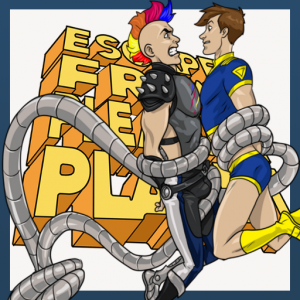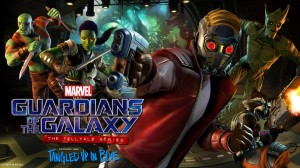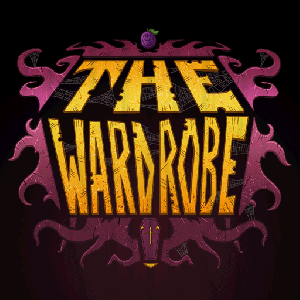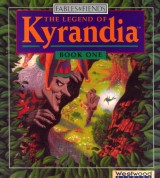Review for Danganronpa: Trigger Happy Havoc page t
Danganronpa: Trigger Happy Havoc is the kind of game that requires the right kind of taste to be appreciated. It’s unapologetically dark by design, doesn’t hold back from some pretty in-your-face violence, and replaces many traditional gameplay elements with an odd assortment of mechanics not normally found in adventures. Though it tasks players with investigating murders and solving them in courtroom scenes, similar to Capcom’s popular Phoenix Wright games, it is a far cry from that series’ lighthearted approach and tongue-in-cheek humor. It’s more akin to an entry in the Saw film franchise, as directed by David Lynch. Originally a Vita exclusive but recently ported to PC and PS4, it’s a good game for those able to appreciate its bizarre sensibilities, but even more than most games, it certainly won’t be for everybody.
Players take on the role of Makoto Naegi, a high school student who, much to his surprise, has been invited to attend the prestigious Hope’s Peak Academy, where only the most elite students are prepped for a life of success. Stepping into the school on orientation day, however, he quickly loses consciousness and wakes up in a classroom, disoriented. Meeting the other students, he discovers that the school is completely sealed up, effectively trapping them within. Worse, they’re soon informed by the cute and deceptively cuddly robot teddy bear Monokuma, and whoever controls him from behind the scenes, that they will stay trapped forever, unless they participate in a sadistic killing game, with the sole survivor being the “graduate” and released back into the world.
Once the crux of the game has been introduced, the remainder of the narrative is split into six chapters, each leading up to a murder and ending with a trial. Whenever a murder occurs, the remaining students must participate in a class trial to try to discover the killer. If the correct culprit can be identified beyond a shadow of a doubt, he or she will receive a lethal and twisted punishment. Should you fail to establish guilt, all students but the guilty one – known as the “blackened” – are killed instead.
Getting to know Danganronpa’s cast of characters is a big job, especially early on before you become more familiar with them. For starters, Makoto meets all fourteen of the others at once, within the first few minutes. Luckily, all of the character design are unique, colorful, creative, and, in several cases, humorous. Their over-the-top personalities are as memorable as their exaggerated features, like the otaku student Hifumi who cares more for the 2D world of his manga than his real-life companions, or the heavily-muscled world class fighter Sakura. The distinctiveness of the characters is a great help in getting your bearings early on, though the story is sadly a bit lagging during the first couple of chapters. As you get a better handle on the story and cast, the narrative also picks up considerably.
At the beginning of each chapter when things are at their calmest, you will participate in the Daily Life section. Here, Makoto interacts with his fellow classmates in both scripted and exploratory gameplay segments. There’s generally a bit of housekeeping involved – moving to certain areas within the school to trigger conversation scenes to keep the plot moving along. During most chapters, you are also given designated blocks of time dubbed as Free Time, in which you can choose to visit any character you wish, deepening their relationship with Makoto. Though these sections can help flesh out some character details, they have no bearing on how the overarching narrative plays out, and often seem like filler. Of course, they can be skipped altogether by just going to bed instead, but this comes at the price of missing out on unlockable abilities and skill points that extend the timers during class trials or provide extra chances to answer questions.
Wandering around the school is done in a free-roaming first-person mode, with an overlay map that can be toggled on and off. Entering a classroom or other location triggers a unique transition reminiscent of opening a cardboard pop-up book, where all furniture drops in, pops up, or unfolds itself in some way. Other characters are displayed in a similar way; while actual conversations feature big, static character portraits, all students not currently engaged are cardboard cutouts that always face the player, turning creepily on their own axis as you move past them.
Controls work passably most of the time, though turning has a tendency to feel much more sluggish than it should. While some camera settings can be eased up on in the options menu, turning and moving with the PS4 controller’s two thumbsticks generally don’t work incredibly well together. The camera has an annoying habit of slowing whenever it locks on to an interactive object, delaying movement. While the overlay map shows the floorplan, it isn’t interactive in any way – there is a second, much more useful map, but it is only accessible by going through a separate menu screen. This is the map most players will reference the majority of the time, since it features fast-travel points to move from point A to point B in short order, and provides information on where to go to advance and reveal locations of all other characters.
Before long, the story gets around to the discovery of a body. This is where Danganronpa really comes into its own. With such a large cast of characters, there’s plenty of suspicion to go around, and the game takes full advantage of this. The Daily Life segment ends, and the Deadly Life portion begins. Much like before, time is split between scripted dialog scenes and investigation sequences, where Makoto travels to various areas of interest and examines them, picking up clues and interrogating others. This is pretty hand-holdy, and the story will not move on until every clue has been uncovered, at which point the Class Trial starts.
How Danganronpa handles its courtroom scenes is certainly unique. Far from simply reading text and pointing out contradictions (though this happens too), there are quite a lot of different gameplay elements, mainly minigames, that make up the various stages of the Class Trial. Clues are represented as Truth Bullets, which must literally be aimed and shot at contradictions in the text as it flashes across the screen. Even knowing a statement is faulty, disproving it still requires careful aim and timing, since missing will cause the Truth Bullet to harmlessly bounce off unimportant text or be deflected by other statements, known as White Noise. Other trial segments include playing a classic game of Hangman and arguing your case in a rhythm-based Bullet Time Battle, each with its own unique rules. Finally, a case must be wrapped up by giving a Closing Argument, which means dragging and dropping images into a right-to-left manga recreation of the crime, then watching it all play out live and in living color.
Throwing everything but the kitchen sink at you, there are so many different components to the Class Trials that even near the end of the game, new gameplay styles that require their own tutorials are still being introduced. Not only does it feel out of place to be in the middle of a murder investigation and suddenly break into a rhythm minigame, but the distractions simply aren’t very fun. It feels more like a case of “time to get through this one” resignation, and since the time between trials is fairly long, a mechanic you just learned and used for all of 30 seconds will be all but forgotten when it pops back up during the next one. Difficulty for these minigames varies and can be adjusted in the options menu, but the annoyance of being forced, even briefly, to jump through unnecessary and out-of-place hoops remains. Should you ever fail a minigame enough times to run out of health (an actual health bar decreases every time you answer wrong or fail a challenge), the game simply sends you back to the current trial segment to try again, this time with restored health. Failing may actually make it easier to succeed the next time.
Needless to say, Class Trials are loooong, often taking several hours just to prove something that you may have already been able to deduce. This can sometimes make the story feel like it’s moving at a snail’s pace, excruciatingly intent on poring over every meticulous detail. To top it off, every phase runs on a timer, though the time limit is laughably generous. Successfully finishing a trial awards an overall score, and a reward of Monokuma Coins, the in-game currency that can be spent to purchase gifts that increase Makoto’s relationships with his classmates.
If a group of young people murdering each other out of desperation isn’t enough, Danganronpa cranks the sadism dial up several degrees for the post-trial Punishments. These are elaborate, cruel, often brutal ways that the murderers get what’s coming to them. They feel like a morbid reward for solving each case, and seeing what devilish concoction Monokuma has cooked up next quickly becomes something to look forward to, in some demented way. But many of the students themselves have dark and twisted personalities, and sometimes it is hard finding one to really root for. Then again, as bleak and vicious as it can be, there are moments of levity and hope throughout the game’s roughly thirty hours of play time, and nobody is ever portrayed negatively “just because.”
With the new ported version, the graphics team doubled down on the technical limitations they originally had to work with. It is essentially a 2D game set in a 3D space with its pop-up book feel, and really puts its outstanding character designs front and center. Though you will be looking at still images the majority of the time, cinematics are used at key moments like the executions. Gorgeous hand-drawn scenes are filled with what the game’s writer calls “psycho pop art”: bright colors saturating everything to contrast with the gloomy, malign subject matter. Rooms and hallways are plastered and lit in bright pastels; during class trials, the screen is jammed full of moving banners, scrolling text, animated character portraits and more; and blood is a bright fluorescent pink that just pops off the screen. Even menus feature neon backgrounds.
Unfortunately, praise for the music comes with a bit of a caveat. The tracks themselves are well-composed, appealing in their own right and helping keep the mood light for the less depressing moments before beginning to build tension again. These scores are incredibly catchy and cling to your memory for days after the game has ended. The trouble is that each song is repeated so many times. The voice-overs, which can be set to either English or the native Japanese, is tolerable, with Monokuma’s childlike glee married to murderous psychosis standing apart from the rest. Most of the dialog isn’t actually voiced, with the exception of cinematics and a few other choice moments. However, characters are constantly throwing in quick lines, noises, or other sound effects as you click through text. This feature is incredibly annoying, but can’t be toggled off as it’s tied to the remaining sound settings.
Overall, Danganronpa: Trigger Happy Havoc is a game whose total experience is greater than the sum of its parts. Not everything about it is perfect. It isn’t a dream to control, and the user interface and sound design can be a bit irritating. But this is outshined by a great visual style, memorable character designs, and a story that leads players down a long plunge into a very dark rabbit hole. Gameplay is divisive, and most will probably either hate or love the non-standard approach to courtroom drama exhibited here. But with deliberately gradual pacing, and a story as dispiriting as it is intriguing, it is a murder mystery that will capture fans of slightly twisted and unique stories in all the right places.


